
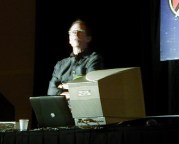
| Dana Atchley, co-founder of the Center for Digital Storytelling |
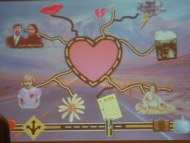
| His grandfather first got a movie camera many years ago. Here you see his digital storytelling screen with an old movie showing an ancient automobile framed by a drive-in movie screen above the control panel. The drive-in screen evokes in him, he says, memories of great times in his youth on dates. (As he says, stories let people know who you are.) |
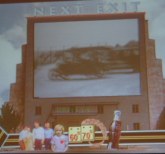 |
| His grandfather made his family parade out of the house every year, line up, and turn around in unison (as he shows, they never quite got the hang of all turning the same way...). He showed his father growing up this way, turning, turning, turning: |
  |
| Black and white gives way to color. Then, his mother shows up in the films: |
  |
| At his point he stops the video of the movies. You can see his father kissing his mother. He recounts how his parents divorced when he was young, and rarely showed affection towards each other, as he recalled. This one section of just a few movie frames is all he has to show him how much they cared for each other at one point. |
| Finally, they turn around and he's in the picture. First in his mother's arms, and then when they finish turning, in his father's: |
 |
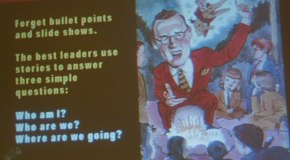
| What can we learn from this? |
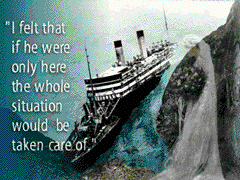 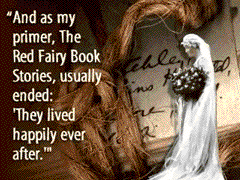 |
| Originals, not photos like the others, courtesy of Dana Atchley. |
| Used with permission. |